What do blueberry plants look like each season? This perennial plant goes through so many changes and can look very different from month to month. Here is a look into how blueberry plants transform.

There are so many benefits to having homegrown blueberries, the biggest being all their health benefits.
Blueberries are full of antioxidants, vitamins C, K, magnesium, and potassium. Plus they just taste so good. Add them to any of these blueberry recipes.
They are also really easy to grow! Blueberries are a plant all home gardeners should add to their gardens. Learn how to grow blueberries in your backyard.
They are simple to take care of and produce tons of fruit every year.
Get my other blueberry resources:
How to tell blueberries are ripe
Blueberry Varieties

There are lot's of different varieties of blueberry plants. They will all look very similar. The biggest distinction is their height.
The types of blueberries are:
- Lowbush Blueberries (Wild): Growing only a few feet tall and produce smaller, sweet berries. Learn more about lowbush blueberries.
- Highbush: Can grow 6-12 feet tall and produce much bigger, juicer berries.
- Southern Highbush: Grown in the Southeastern United States.
- Northern Highbush: Grown in the North America region.
- Half-High Blueberries: Cross between Northern Highbush and Lowbush.
- Rabbiteye Blueberries: This is a wild variety of blueberries. These are the tallest.
All these varieties of blueberries will look similar in the shape of the leaves but will vary in height and how they change throughout the year.
To tell what variety grows best in your area, check out the USDA Hardiness Zone Map.
With the different varieties, there are also different types of blueberry plants.
Each one producing varying sizes of berries, sweetness, and can be harvested at different times throughout the summer.
Check with your local nursery or where you buy your plants for different varieties.
The Four Seasons and Blueberries
Living in the Pacific Northwest, we get a true 4 seasons. Hot summers producing the best berries and some very cold winters.
This is a look at what Northern highbush plants look like throughout the year.
Southern highbush will look very similar but may not go fully dormant in the winter.
Lowbush varieties will be much shorter.
Winter
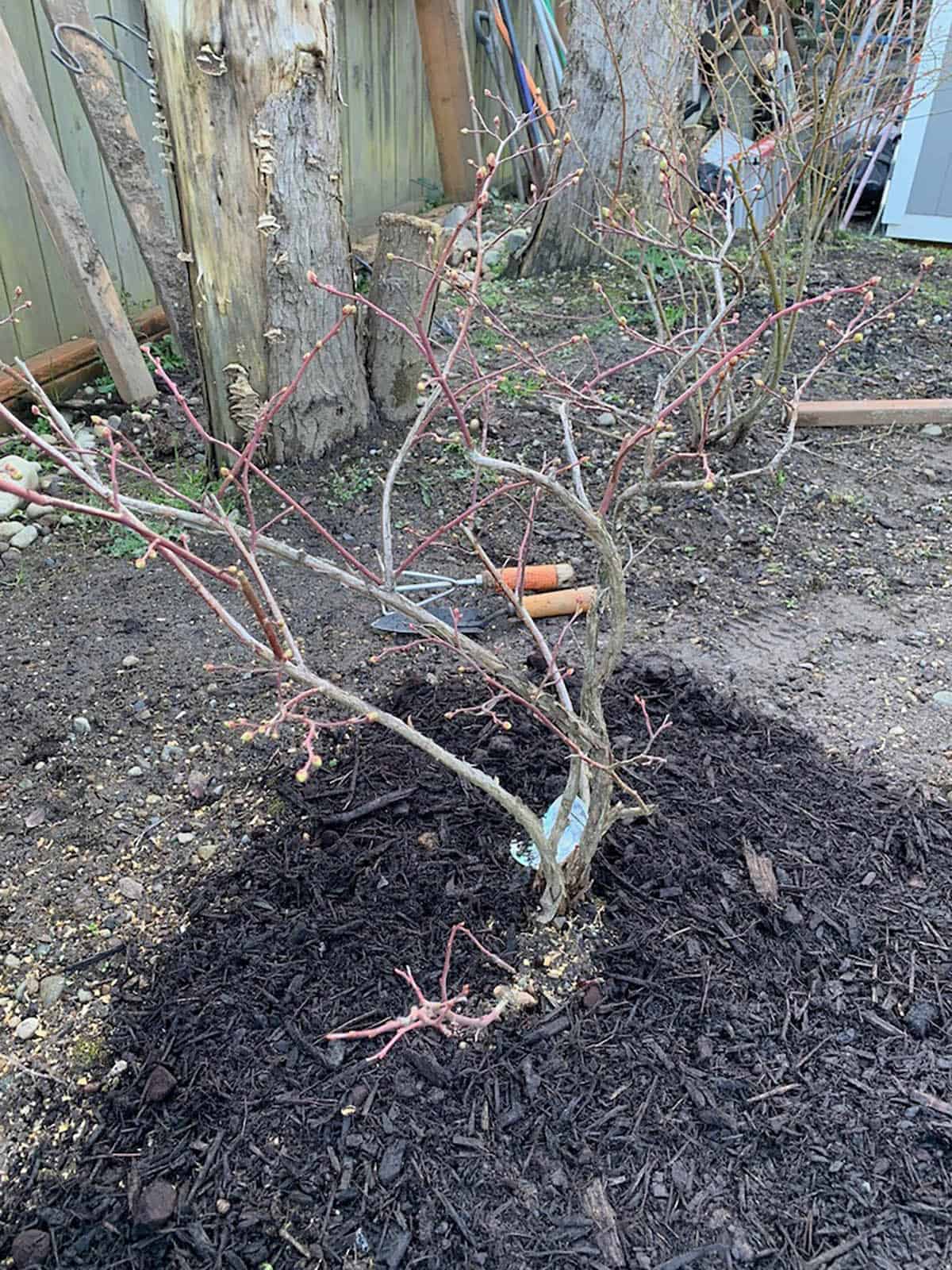
In the winter, blueberry bushes do go dormant. Meaning they drop all their leaves and stop all growth. No worries, everything will return in full bloom the following year.
The older branches will be an ashy grey color and the new branches will be almost light brown. It will be very easy to detect new and old growth.
This distinction will be helpful with pruning, which is typically done in late winter.
From late winter into early spring they will start to develop little buds that will turn intonthe leaves and bundles of berries.
When to prune blueberries? it is best to prune blueberries in late winter just when you start to see the leaf bud starting to develop.
Spring
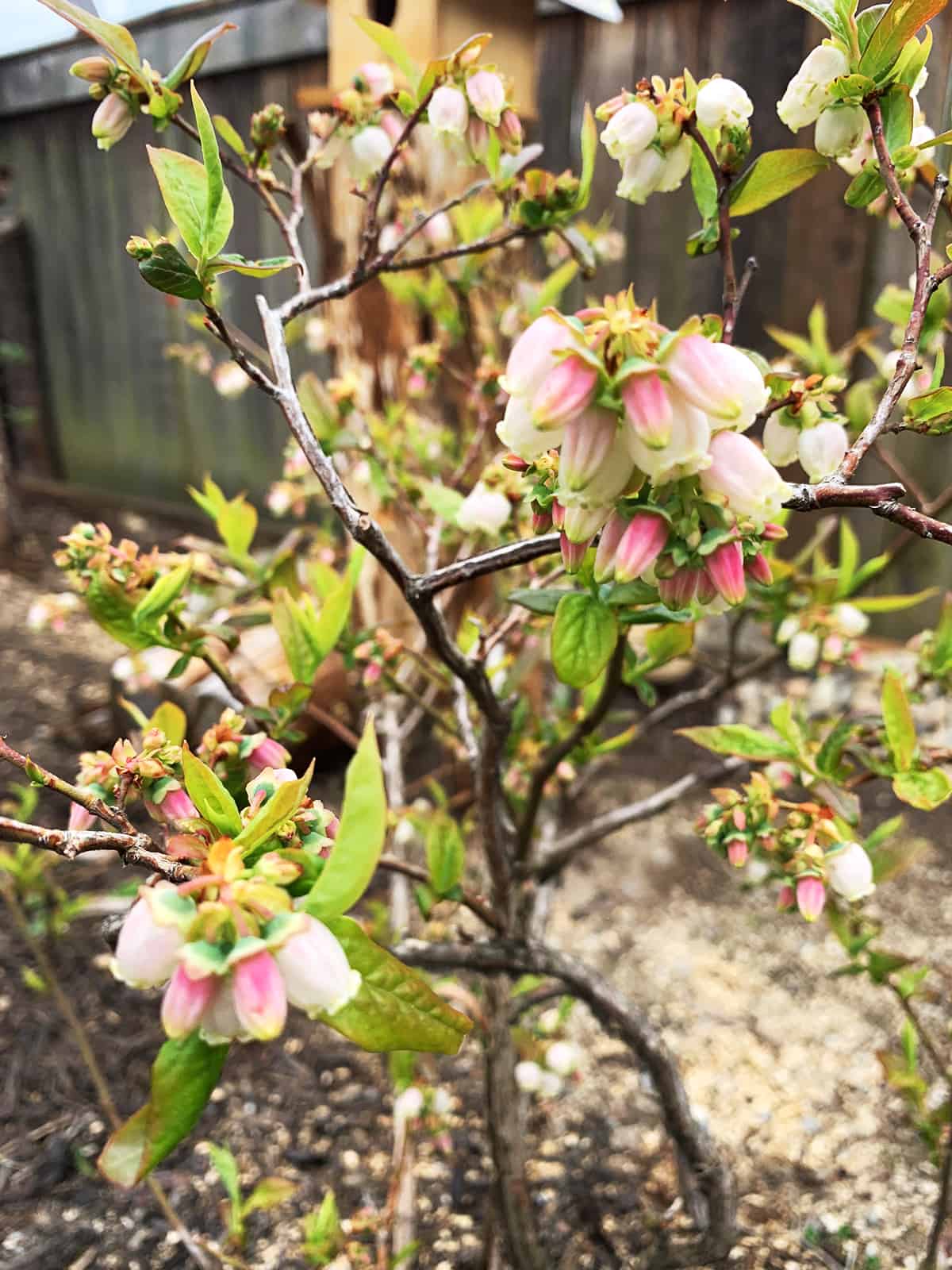
In early spring, blueberry plants will start to form little flower buds and leaves will begin to grow.
Late spring you may even start to notice some berries forming. They are not ready to pick just yet! Get my full guide on how to tell when blueberries are ripe.
Summer

This is the season blueberry shrubs are at their peak. Full of green leaves and loaded with berries.
The berries will grow in clusters and can range from a bright green to a dark blue or purple.
Because not all the berries will be ready at the same time, you can enjoy the fruit over a longer period of time.

Towards late summer, the leaves will begin to turn from green to shades of red or yellow. This is a sign that the end of the blueberry season is near. Plant growth will also slow down at this time.
Fall
In the fall there is a good chance your berries are all harvested and the leaves will really start to turn colors.
Blueberry plants look stunning in their fall leaves but they don't last long. They will fall closer to winter.
And then the cycle starts all over again.
What do blueberries need to grow?
While blueberries are simple to grow, they do require a few things to get the most out of each plant.
A lot of varieties are not self-fertile. Meaning you would need at least two for cross-pollination to occur.
They thrive in acidic soil, have a shallow root system, and can produce tons of fruit each year.
To get the best yield from your plants make sure your blueberries are getting full sun, in well-drained soil, have a soil ph of 4.0-5.0, and are planted with some peat moss to help with water drainage.
Blueberry plants can last a long time, so make sure you do all you can get these plants started out right. A soil test is also beneficial.
If you want to start growing and harvest blueberries of your one, check out my other resources and recipes:
Other Gardening Information:




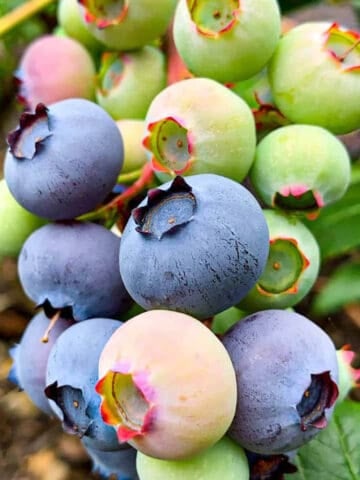

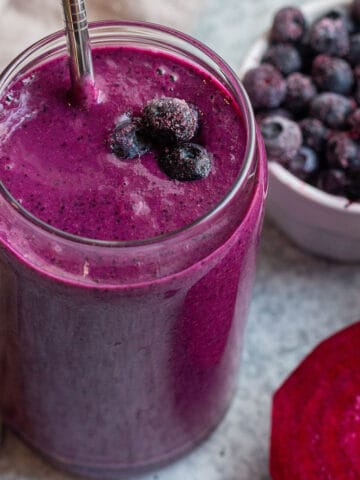

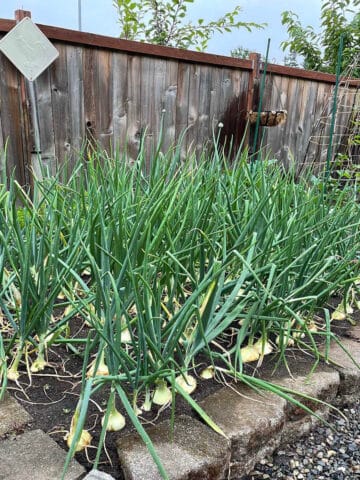
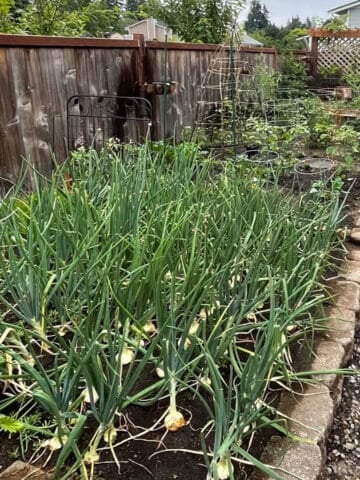
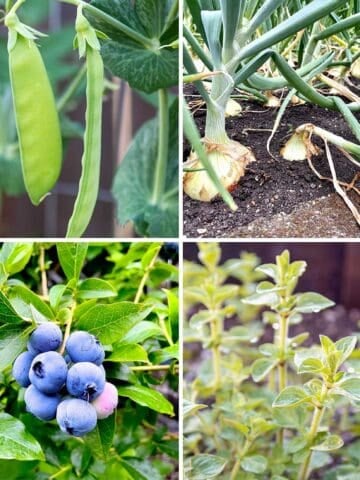




Leave a Reply